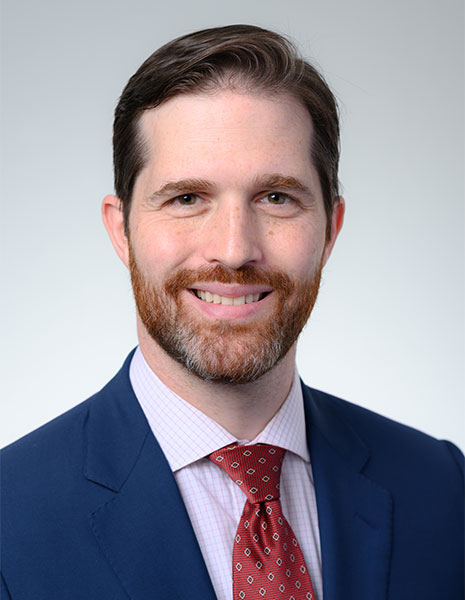Defeating cancer definitely is a reason to smile. Unfortunately, when that cancer is located in areas of the head, neck and mouth, post-surgery smiling is not always possible.
 University of Alabama at Birmingham School of Dentistry oral oncologist and surgeon Anthony Morlandt, M.D., D.D.S., F.A.C.S., is working to ensure that this cancer journey can end with an actual physical grin. And he is teaching others how to do the same as director of UAB’s Head and Neck Oncology Fellowship Program.
University of Alabama at Birmingham School of Dentistry oral oncologist and surgeon Anthony Morlandt, M.D., D.D.S., F.A.C.S., is working to ensure that this cancer journey can end with an actual physical grin. And he is teaching others how to do the same as director of UAB’s Head and Neck Oncology Fellowship Program.
“We are focused not only on survival from cancer, but giving the best quality of life, which usually comes from having full dental rehabilitation,” Morlandt says. “It doesn’t do our patients much good if we remove a cancer and help them survive, but they’re not able to speak or chew or swallow or smile. So we have found that having the dental training is such a helpful part of the head and neck surgeon’s armamentarium.”
In 2016, the SOD Department of Oral & Maxillofacial Surgery combined with UAB Medicine to form an oral oncology sub-specialty program, which was accredited by the Commission on Dental Accreditation in 2023. Morlandt says since most oral cancers are seen by dental specialists, there needs to be a surgical aspect tied to dentistry to help treat those patients.
The two-year Fellowship Program provides experience on both sides of this type of cancer treatment. Fellows spend much of their first year focused on cancer removal and surgical oncology, then the second year on the intricacies of microvascular reconstructive surgery, which Morlandt says can involve “using a needle the size of an eyelash, and a tiny suture that’s finer than hair.”
 First-year fellow Arianna Elmquist, D.M.D., already had gained significant experience as an oral and maxillofacial surgeon during 18 months of private practice in her home state of Wisconsin. But she came to UAB as part of the fellowship in order to improve her capabilities, and says that within the first few months “my surgical skill and comfort level with the procedures doubled.”
First-year fellow Arianna Elmquist, D.M.D., already had gained significant experience as an oral and maxillofacial surgeon during 18 months of private practice in her home state of Wisconsin. But she came to UAB as part of the fellowship in order to improve her capabilities, and says that within the first few months “my surgical skill and comfort level with the procedures doubled.”
“There are a lot of people involved in the head-and-neck cancer space. But as oral surgeons, we are particularly positioned and trained to see the care from start to finish,” Elmquist says. “This program is putting me in a situation that’s maybe sometimes out of my comfort zone and really pushes me. But as a result, I’m learning procedures that are going to affect someone’s life a lot more.
“For these patients, this is a time when they are at their lowest, going through maybe the toughest battle they’ve ever faced. We try to meet that by providing a level of excellence in care that includes making sure they are able to eat and speak and feel as whole as they can afterward. The effect that you can have by providing that benefit to their life is unparalleled.”
 Current second-year Fellow Kanvar Panesar, D.D.S., M.D., agrees. After studying and training in all corners of the country – from his home in Southern California (undergrad at UC San Diego) to New York (dental degree from NYU) to the University of Washington (residency) – Panesar says he has learned that the reconstructive process is a crucial part of head and neck oncology.
Current second-year Fellow Kanvar Panesar, D.D.S., M.D., agrees. After studying and training in all corners of the country – from his home in Southern California (undergrad at UC San Diego) to New York (dental degree from NYU) to the University of Washington (residency) – Panesar says he has learned that the reconstructive process is a crucial part of head and neck oncology.
“I think it is under-appreciated just how much oral health affects someone’s self-esteem and day-to-day life,” Panesar says. “I’ve talked with people who haven’t been to a restaurant in two years because they don’t want to eat in public. With a lot of surgeries, you can have all the incisions under your clothes and nobody will see them. But everyone is going to see your face. That’s how you interact with the world.
“So yes, we can remove their cancer. But how can we make sure that their quality of life is also achieved? Those are the two sides that, with our dental background, we are able to think about and plan ahead.”
Like Elmquist, Panesar says his surgical skills have improved significantly during his time in the Fellowship Program. But Panesar says he also is receiving valuable business lessons that will help him advance to the next stage of his career.
“Dr. Morlandt has built a high-volume practice where I can also learn the logistical side of this work,” Panesar says. “A lot of places can teach me the surgery side, but not many can teach that other aspect that he’s been able to do so well. Once I finish here, I want to take this model and collaborate with other specialists who operate in the same area of practice.”
Those are the types of comments that make Morlandt smile.
“We try to provide a lot of training and leadership in patient management and team dynamics,” Morlandt says. “So hopefully they learn a system from us that is reproduceable, that they can then take to their own various locations and help people there.”